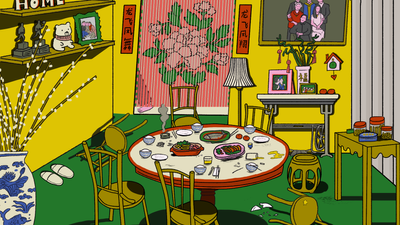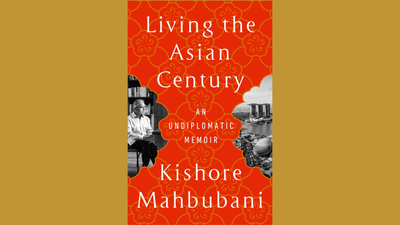Honesty. Fearlessness. Independence. Balance.
Quality of writing. Care and love of the writers.
Depth of research. Humour.
Jom’s recently concluded reader survey, our first ever, was gratifying partly because of the responses to the question, “What do you like most about Jom and why?”
We’re still new, we’re still young, but the people who responded to that question (204 of the 318 respondents) validated everything that we’re trying to build here. In the spirit of openness and transparency, we’ve decided to publicly share many other key points, including the criticisms of Jom (we had also asked readers what they don’t like).
More than that, we’ve also decided to write a full article that addresses one common criticism that we’ve heard several times since we founded the publication: why do you keep mentioning Lee Kuan Yew? It’s an important question, and we felt the need to explain our position clearly. Read the piece here.
About the survey: We ran it from March 24th to April 9th 2023. We received a total of 318 responses (195 paid subscribers and 123 free). For the survey geeks out there, given that Jom’s newsletter subscriber base is 3,047, this response rate is just a little below what’s required for a 95 percent confidence level with a five percent margin of error. So, in our minds, pretty decent.
Key findings:
Readers pay for Jom because they want independent, alternative views. The main reasons people get a paid subscription to Jom are to support independent media (85.6 percent), because they want alternative views to the mainstream media (79.5 percent), and because they simply enjoy the product itself (70.8 percent).
The newsletter and Singapore This Week (STW) are popular, the essays less so. Of paying subscribers, over 75 percent read the newsletter regularly and over 70 percent read STW regularly, but less than half read the essays regularly.
Some commenters said that the essay topics are too varied and infrequent. There’s a bit of a chicken-and-egg issue here that will hopefully sort itself out: we need to slowly increase article production but that requires money and subscribers. Since we are a general interest magazine, our medium-term aim is, just like The New Yorker or The Economist, to every week put out pieces on every important subject area: Arts, Culture, Food, Earth, Politics, Business, and more.
Hopefully, the upcoming presidential and general elections will give us the boost we need–we’ll be putting out more politics pieces (which seem to be the most popular category) then on a more regular basis.
Readers consider STW a valuable product, in particular Politics, Society and the History Weekly. Almost 85 percent of paying subscribers said that STW is very useful to them (4 or 5 on a scale of 5). Those three categories are the most popular, though we shouldn’t place too much weight on that finding, since we limited choices to three. A couple of people said that they wanted to tick every category and box. And several commenters said that they love the breadth of STW, discovering new things.
- “The weekly review has become a highlight of my week. Per the question above, there is coverage of the things I seek out (politics, history, arts), but I like getting digests on tech news, etc., which I otherwise wouldn’t catch.”
Jom’s pricing seems fair. Of paying subscribers, over 80 percent believe Jom is priced fairly; and while 7 percent say it’s a little expensive, another 10 percent say they could pay even more. Of non-paying readers, 21 percent said that they haven’t subscribed because Jom is too expensive. (While over 50 percent said that it’s because they have too many subscription products.)
Jom’s offering and value proposition may not yet be entirely clear. Almost a quarter of those who haven’t yet got a paid subscription say that it’s unclear what the added benefits are. We need to do a better job of articulating this.
The profile of Jom’s readers (combined paying and non)
- Gen X - Z. Almost three quarters are in the 25-54 range. Not a single one is below 17, and 3 percent are over 75.
- Highly educated. Over 47 percent have a university degree and over 46 percent have a postgraduate degree.
- Varying incomes. The pie is pretty well split. The two biggest slices, in fact, are at the bottom and top. Over 20 percent earn below S$25,000 a year; and over 15 percent earn more than S$200,000 a year.
- Gender is somewhat evenly split, and just under 13 percent are non-Singaporean.
- What else do they read? Interestingly, they’re more likely to read CNA and The Straits Times (ST) than Mothership or Rice. The New York Times is by far the most popular foreign publication they read (and overall second only to CNA). The Economist is next. The New Yorker is further down the list (somewhat surprising, too, given Jom’s aspiration to be The New Yorker of South-east Asia).
Paying subscribers devote a decent amount of time each week to Jom, non-paying less so. Over 60 percent of paid subscribers spend 11-30 mins on Jom, while over 12 percent spend over 30 mins. By contrast, over 56 percent of non-paying subscribers spend under 10 mins each week on Jom. We need to get this up (partly by making them aware of STW).
There’s demand for a “Letters to the editor” page and the ability to read/give away a paywalled essay; but less enthusiasm for a mobile app or a Comments section below each essay. Almost 60 percent of paid subscribers believe a “Letters to the editor” page is important. This is easy to implement, and we should do so soon. The ability to give away articles to friends (for paid subscribers) or to read X free articles every month (for non-paying) is a bit trickier, and easier to do when our output is much higher. But we’ll think about this.
These are some of the tensions that we’ll have to manage, which are apparent from the individual comments (selected ones below). Some readers want a lot more coverage, while others appreciate the fact that it’s not overwhelming, and that a lot of time is spent in the production of each piece. Some readers want us to start growing by accepting advertisements, others like Jom because it’s ad-free. Some readers think we are too harsh on the government and the mainstream media; others think we are too soft. Some readers appreciate the literary approach of our magazine–while others think it’s “pretentious” or “too atas”.
For a deeper explanation about our approach to these tensions, please read these two pages: About us and Our values.
Selected comments:
What do you like most about Jom and why?
“It’s so refreshing to read well-crafted, measured commentary on political issues of the day. Some of the other sites can deliberately take on an automatically hostile anti-government stance, which defeats the notion of well-balanced yet critical journalism. There is already so much [that’s] disquieting about mainstream journalism here (I am a former journalist/editor), despite the attempts of dedicated hacks working within current constraints of mainstream channels. Any improvement over the decades is sorely disappointing. Social media has been the vital difference.
I like the courageous intention and conviction of this platform. I appreciate the quality of the dialogue, and the essential research and verification to support accuracy and veracity on which opinion and analysis ought to be based. I hope you include even more writers because the vetting standard is high. Humour and satirical insights are powerful tools. And so satisfyingly entertaining.”
“Aiyo, must write essay. I really love the writing, the sharp analysis, the courage to write critically about Singapore politics in spite of the heavy-handed control of media and the bullying tactics of the PAP [People’s Action Party], but it is not just criticality for the sake of it (life’s too short) but criticality supported by rational arguments, research and journalistic standards. Oh and I love all the writers, full time and stringers! Keep up the excellent work, all you good, swell folks.”
“Nuanced perspectives: Jom has (imo) an overarching ‘centre-left’ (for lack of a better phrasing) editorial position that is in line with my values, yet also offers many angles that challenge my default biases/positions.”
“Boldness, clarity and rootedness. I sincerely wish most Singaporeans (both who live locally and overseas) follow the magazine, because I feel that it would help to define a close-knit, socially aware Singaporean community.”
“In a world where so much of our media is controlled by state-run outlets or conglomerates with their own agendas, it’s refreshing to have access to independent journalism that strives for truth and accuracy above all else.”
“I love the recognition of intersectionality Jom weaves through its writing; the way it refuses to be bound by a restrictive understanding of nationality and cultural identity. As someone with a mixed cultural heritage myself, it is so refreshing, and so reflective of our Malaysian/Singapore cultural mix.”
“Being away from Singapore, it’s a great way to stay in touch.”
What don’t you like about Jom and why?
“The audience that Jom attracts and identifies with is highly pretentious and self-serving. Myself included.”
“Coverage is still patchy.”
“Many articles are too long-winded and seem to focus on form instead of substance. More verbiage does not make a better essay. Clarity of thought and conviction does.”
“A little too ‘atas’.”
“I wish I could binge more! But I’d rather the pace be kept sustainable and the writers paid fairly for the good work they do.”
“I wish it were (somehow funded by rich people out there to be) free.”
“Jom’s criticism of mainstream media, especially ST, risks becoming a bit hackneyed, when it is done in almost every newsletter. It also sometimes comes across as being overly harsh in its assessment of what the mainstream media said, did or did not do. While some of Jom’s critiques are valid, the constant lampooning might rub some the wrong way and be seen as nit-picking, such as its comment on ST’s report on the legal case regarding Connie Soh. I recalled Jom came down on ST for bringing in other unrelated racist incidents, even though providing such background is standard practice for newspapers locally and globally, and readers like me appreciate the contextual info.”
“I’m uncertain of its quality just yet. And I’m uncertain if it plays safe with its write-ups against the autocratic rulers of the demonic PAP one-party state.”
If you enjoy Jom’s work, do get a paid subscription today to support independent journalism in Singapore.






